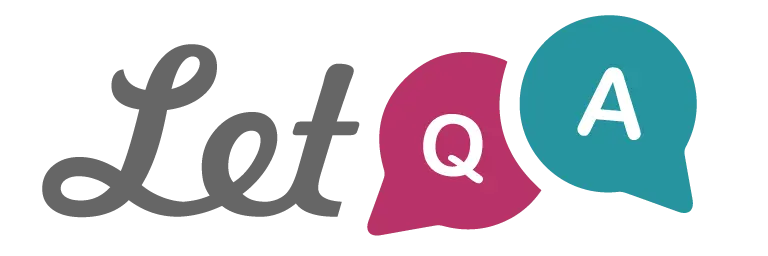Trắc nghiệm Tiếng Anh 2 - Học viện Y Dược học Cổ truyền Việt Nam (Có đáp án và Giải thích)
Ôn tập và kiểm tra kiến thức Tiếng Anh 2 với bộ câu hỏi trắc nghiệm tổng hợp dành cho sinh viên Học viện Y Dược học Cổ truyền Việt Nam. Đề thi bao gồm các dạng bài tập về từ vựng, ngữ pháp, kỹ năng đọc hiểu và giao tiếp chuyên ngành. Đặc biệt, có đáp án chi tiết và giải thích giúp bạn hiểu rõ cách sử dụng ngôn ngữ chính xác. Phù hợp cho sinh viên y khoa và những ai muốn nâng cao trình độ tiếng Anh chuyên ngành.
Từ khoá: trắc nghiệm tiếng Anh đề thi Tiếng Anh 2 Học viện Y Dược học Cổ truyền bài tập ngữ pháp kiểm tra tiếng Anh y khoa luyện thi tiếng Anh đề thi miễn phí tiếng Anh chuyên ngành y
Câu 1: A junior doctor is writing ……………case history notes.
Câu 2: In presenting complaint (PC) the tense of Present Perfect is used to ……………
A. cover the recent history and ask about each time the pain happens.
B. emphasize that the action is still happening around the time of PC
C. relate the time up to now and cover the recent history.
D. emphasizes that it has been happening before and round the PC
Câu 3: RTA/RTC
A. road traffic accident/road traffic collision
B. roads traffic accident/road traffic collision
C. road traffices accident/road traffic collision
D. road traffic accident/road traffic collisioes
Câu 4: When describing any ……………. of events, it is often clearer to use words such as FIRST, NEXT, BEFORE / BEFORE THAT, AFTER / AFTER THAT.
Câu 5: Besides providing information, the effective ways can improve……………. are a combined use of educative, practical, and emotionally and behaviorally ……………..
A. compliance / supportive interventions
B. compliant / supportive interventions
C. compliance / supporting interventions
D. compliant / supporting intervention
Câu 6: When taking history of the presenting complaint (HPC), the question “How long have you had the pain?” is used to ask about ………….. of pain?
Câu 7: I'd like you to ….. nice and still for me, if you can. OK.
Câu 8: …………… to your shoulder or is it just her?
B. Has the pain been spreading
C. Both A and B are correct
D. Neither A nor B is correct
Câu 9: The verb “hospitalize” in the sentence “You won’t have to be hospitalized” means …………… in non-technical language.
Câu 10: The abbreviation of “stat” means ………………..
Câu 12: The word “deprivation” in the sentence “Social deprivation is associated with death from all causes” means …………….
Câu 13: The suffix of “–ostomy” describes a surgical procedure of …………….
A. removal of a structure by surgery
C. an opening between two cavities or the outside
D. cutting something open
Câu 15: When taking history of the presenting complaint (HPC), the question “Is there anything which makes the pain worse?” is used to ask about ………….. of pain?
Câu 16: In presenting complaint (PC) the tense of Present Simple is used to ……………
A. cover the recent history and ask about each time the pain happens.
B. emphasize that the action is still happening around the time of PC
C. relate the time up to now and cover the recent history
D. emphasizes that it has been happening before and round the PC
Câu 17: When taking history of the presenting complaint (HPC), the question “Is there anything which makes the pain better?” is used to ask about ………….. of pain?
Câu 18: For a first ward round with a consultant,make sure you know the names of your patients and where they are in the ward,……..
A. as you want to demonstrate that you are familiar with your patients.
B. to avoid wasting time running around looking for patients.
C. so that you can refer to them quickly.
D. because they may be more knowledgeable about the patients on the ward.
Câu 19: The timing, the procedure, and the observer are chosen soley by the trainee on the practical DOPs.
Câu 20: CNS-NAD?
A. central nervous system-no abnnormal detected.
B. centeal never systems- no abnnormal detected.
C. central nervous systems-no abnnormal detected.
Câu 21: …………….. is not the synonym of “rarely”.
Câu 22: The description of “extremely severe / intense” is associated with degenerative arthritis
Câu 24: For a first ward round with a consultant, invite a nurse who knows your patients to come on the ward rounds in that way you can access information easily.
Câu 25: When you want to help patients change lifestyle habits, you should give them the general advice for exercising such as: “If you make …………….and …………… yourself achievable aims, you will be more likely to succeed”.
B. some physical activity / find
Câu 26: The questions “What seems to be troubling you?” and “What’s the problem?” are used by the patient to ask about the presenting complaint (PC).
Câu 27: It is difficult to but once you have got into it...
A. .stick into a new routine
B. settle into a new routine
Câu 28: The sedative will normally make you feel quite pleasant and ……………..
C. Both A and B are correct
D. Neither A nor B is correct
Câu 29: …………….. is not the synonym of “often”.
Câu 31: While explaining procedures, ……………. is used to talk about intentions, that is, when a course of action has been decided upon.
B. what we’re going to do is
C. Both A and B are correct
D. Neither A nor B is correct
Câu 32: The doctors who do work in rural communities are more interested in …………… in the community than getting the highest pay.
C. Both A and B are correct
D. Neither A nor B is correct
Câu 33: The doctor’s advice on changing the patient’s lifestyle might be more comfortable if it does not take into account the patient’s family situation, or his/ her living or work.
Câu 34: An office job can lead to a ……………. lifestyle and snacking on unhealthy foods.
Câu 35: Before a gastroscopy, don’t eat for 4-6 hours because the stomach needs to be empty.
Câu 36: In case notes, the abbreviation of LFT stands for …………….
Câu 37: I …………… in bed for four weeks now. I haven’t been out of it once, doctor.
Câu 38: The pain radiates from around the…. To the back.
Câu 39: Gastroscopy always detect a small number of cases of early ulcers or early cancer.
Câu 40: Pulse 100/min.The abbreviation of Pulse 100/min stands for ……………
B. one hundred beat per minute.
C. one hundred per minute.

